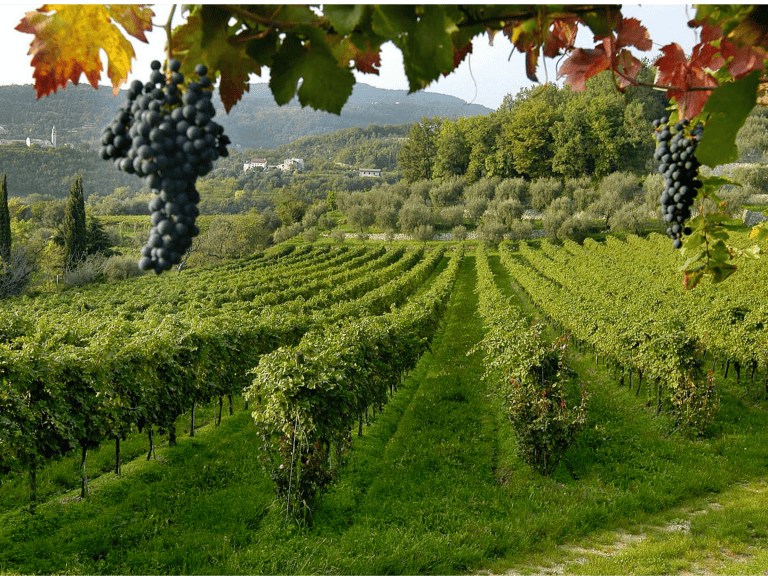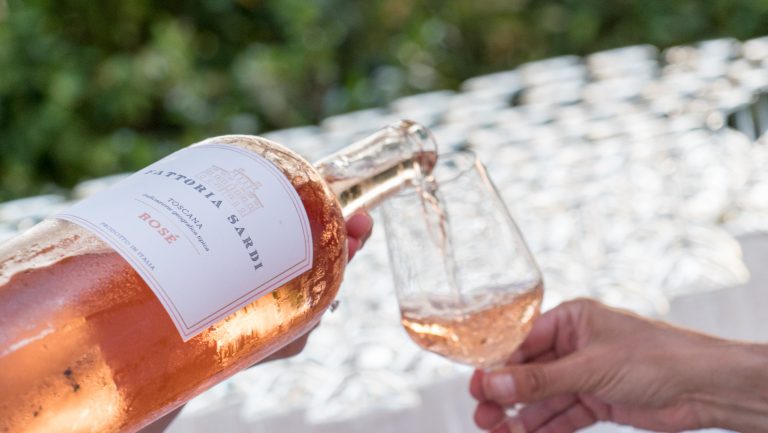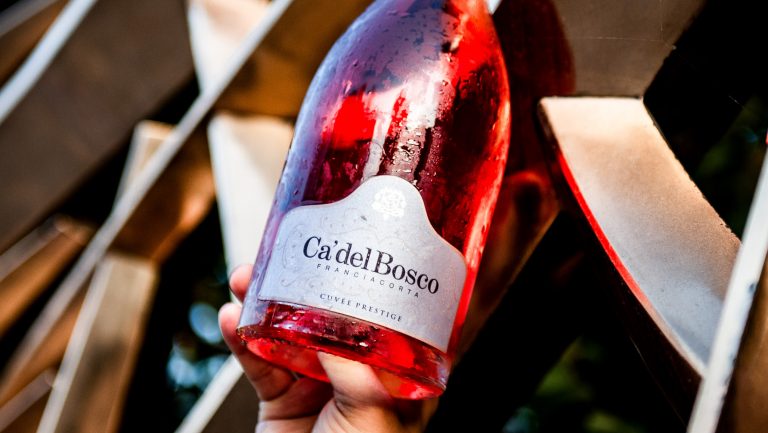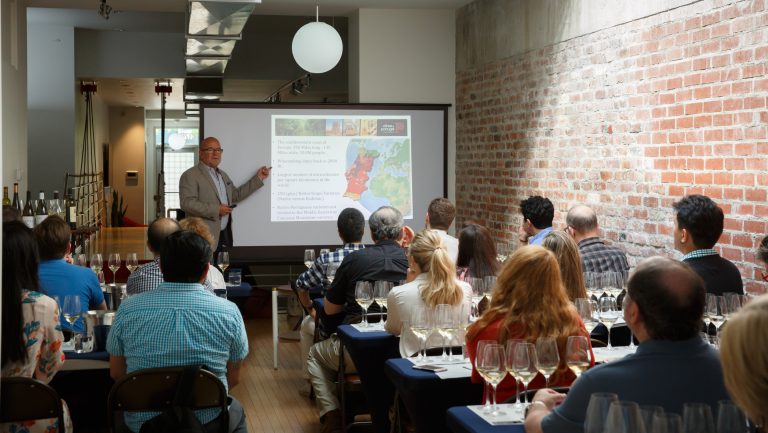This advertising content was produced in collaboration with our sponsor, Santa Margherita USA; it does not necessarily reflect the views of SevenFifty Daily’s editorial team. For more information, please refer to our ethics guidelines.
As temperatures warm in the spring and summer, wine drinkers expect wine lists and retail offerings to be colored in shades of pink. To meet consumer demand, beverage directors and wine buyers begin allocating more space to rosé, adding new SKUs to inventory. And while regions like Provence and California are standard sources for rosé, Italy has become an increasingly important hub of rosé production.
“Historically, Italian rosé was a more robust style of wine, [made] with more skin contact,” says Kristina Sazama, a wine educator for Santa Margherita USA, which is based in Miami. “This has evolved to a more elegant expression that emphasizes delicate floral and fruit notes.” Gentler handling in both vineyard and cellar, as well as the use of native Italian grapes, has created an exceptional, vibrant array of wines within the Italian rosé category.
The diversity offered by Italian rosés is highlighted by portfolios like Santa Margherita USA’s, which includes many examples from regions across the country. Not only can these rosés draw in enthusiasts of the category who are seeking new wines, but they can result in successful sales for retail shops and restaurants.

Don’t miss the latest drinks industry news and insights. Sign up for our award-winning newsletters and get insider intel, resources, and trends delivered to your inbox every week.

Stylistic Diversity
Vineyards can be found in every region of Italy, and the country offers approximately 600 native grape varieties, giving its winemakers a wide range of fruit from which to craft stylistically distinctive rosés. “Italian rosé has a much broader range of styles and profiles due to the vast differences in geographical production,” says Grant Hewitt, the corporate beverage director of the Loews Hotels hospitality company, headquartered in New York City. “They have a much more diverse range than typical French—specifically, Provençal—wines.”

Santa Margherita
As one of Italy’s largest family-owned wine producers, Santa Margherita has developed a reputation for excellence across a diverse range of prominent wine regions.
Because Santa Margherita USA includes properties from the Veneto, Tuscany, and Lombardy, that potential for diversity in its portfolio is evident even within the single rosé category, particularly because the company works to emphasize a sense of place in all its wines. “We import only the rosés that maximize the expression of their unique terroir,” says Sazama. “We’re not offering rosé for the sake of having that SKU but because each of [our wines] has a real sense of place and a deep connection to its history and its land.”

That’s the mission behind Fattoria Sardi in Lucca, a Tuscan producer that practices organic and biodynamic winemaking. Because of the cooler mesoclimate in Fattoria Sardi’s vineyards, the current generation of owners decided in 2010 to switch to rosé production. “Red Sangiovese is certainly better known to wine drinkers,” says Sazama, “but the goal [of the owners] is to be respectful of the terroir and create the wine that the terroir demands.” Fattoria Sardi now uses Sangiovese, Vermentino, and Trebbiano Toscano to create its two pale salmon, delicate rosés—the Toscana IGT Rosé and Le Cicale.
In the globally popular and almost too familiar rosé category, Italy can offer consumers a chance to discover something new. “One of my favorite things about being a sommelier,” says Dee Duff, of Crú Food & Wine Bar in Dallas Love Field Airport, “is introducing someone to a region or style that they’re unaware of but I’m pretty sure they’re gonna love.” He pours the Chiaretto from Cà Maiol in Lugana by the glass—it’s a rosé blend made on the western shores of Lake Garda in Lombardy. Each of the four grapes in the blend—Barbera, Sangiovese, Marzemino, and Groppello—sees only one night of skin contact, according to the producer. The Chiaretto strikes the right balance to make it a true crowd-pleaser. “Chiaretto shows enough strawberry fruit to entice those inclined to a more New World style,” says Duff, “while still possessing the acidity and minerality that makes Provence rosés so popular.”
A Spotlight on Sparklers
The U.S. has also seen a boom in sparkling rosés—driven not only by a growing love of rosé but of bubbly as well. Champagne and Cava may be traditional choices for sparkling rosé wine programs, but guests are increasingly craving diverse regional offerings. “Having the option for our guests to try multiple rosés from several different countries,” says Hewitt, “is key in that it broadens our guests’ knowledge of not only rosé but wines overall.”

Though the flagship Santa Margherita brand is known widely for its Pinot Grigio, the company has been making sparkling wine since 1952. The Santa Margherita Sparkling Rosé blends Glera from Valdobbiadene Superiore, Chardonnay from Alto Adige, and Malbec from the Veneto region to create a fresh, berry-scented, berry-hued sparkling rosé that brings reliability to the table. “The wine,” says Sazama, “has the strong brand recognition and trust associated with the Santa Margherita name.”
It isn’t just value that sparkling Italian rosés offer—it’s quality, too, as these wines can compete with those of famous, premium sparkling wine regions. Take Franciacorta, for example, a Lombardian region that is often called the Champagne of Italy. The Cuvée Prestige Rosé from Ca’ del Bosco uses meticulous farming and saignée vinification to craft Pinot Noir and Chardonnay grapes into a luxurious, traditional-method sparkling rosé. “In my opinion the rosé Franciacorta easily stands up to the traditional rosé Champagne,” says Hewitt, who will list the Cuvée Prestige at a new line of steakhouses of the Loews Hotels group. “Guests are completely amazed that this product is not from Champagne.”

Rosé-Colored Sales
As rosé continues to be a blockbuster among American consumers, offering the wine is no longer optional—it’s mandatory. “Rosé wine sales continue to grow,” says Sazama, “and rosé is nearly a year-round wine.” Hewitt agrees and adds, “Rosés have been on quite a run for the last few years and continue to be at the top of most product mixes.”
The sheer popularity of the classic rosé regions of Provence and California may allow winemakers to boost wholesale prices based on name recognition. But Italian rosé wines remain lucrative for restaurant and retail programs. “The decision to make rosé in Italy is not taken lightly, because there is certainly more of a ready audience for the still red wines of Italy,” says Sazama. “But this is why you are getting more quality for the price—the Italian rosés we import have so much character in the bottle and a unique tie to their terroir.”

Because these wines are well priced, beverage directors can list Italian rosés by the glass, by the bottle, or both. “If priced and portion-controlled properly,” says Hewitt, “Italian rosés can be a key driver of revenue and profit both BTG and BTB.” Duff has seen the results firsthand with the Cà Maiol Chiaretto. “After years of Provence domination of my by-the-glass rosé sales, Chiaretto is now my top-selling rosé,” he says. “It sits right in the sweet spot financially between Provence and California.”
As new vintages enter the market, it benefits both buyer and consumer to explore the dynamic array of quality Italian rosé wines—for the value they represent and the diversity they can bring to both wine lists and retail shelves.

Dispatch
Sign up for our award-winning newsletter
Don’t miss the latest drinks industry news and insights—delivered to your inbox every week.









